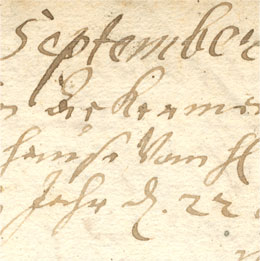Did Christian Ackermann make the baptismal chamber of Tallinn’s Swedish St. Michael’s Church?
The baptismal chamber of Tallinn’s Swedish St. Michael’s Church is considered to be one of Christian Ackermann’s early works. This is primarily because such octagonal baptisteries were widespread in Prussia, Ackermann’s homeland, and because the figures and ornamentation of the baptismal chamber are relatively masterfully carved. Nevertheless, if we look more closely at the surviving photograph of the baptismal font with four puttos that was in the baptistery and the figures and ornamentation adorning the font’s cupola, Ackermann’s authorship becomes dubious: the cutting line appears to be too soft even compared to Ackermann’s early works, and the treatment of the figures in terms of body postures, faces and garment details differs from the master’s other works.
It is impossible to say who made the baptistery because the relevant information is missing. It cannot be ruled out that the baptismal chamber was imported. In a letter to Tallinn’s town council directed against the guild of joiners and wood carvers, Ackermann refers to the practice of importing carved wooden artistic objects from abroad: “…since the joiners’ guild has no proper viewpoints concerning the carving of statues, they are also unfamiliar with this art and all wood carving has to be ordered from somewhere else…” (letter: TLA.230.1.Bf 35 I, pp. 80–83)


